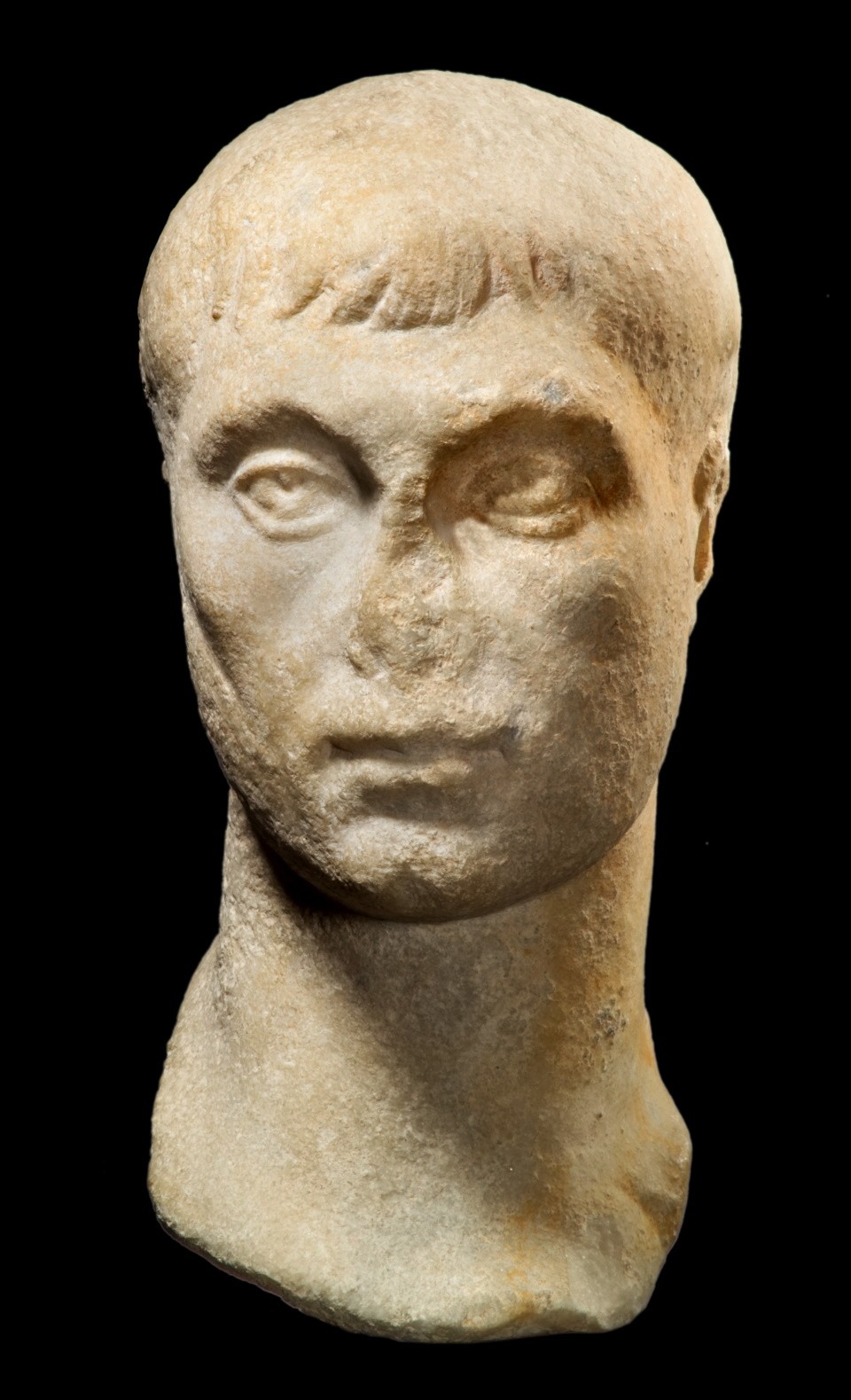The larger-than-life head was intended for insertion into a statue. Its size alone speaks for its use as a ruler's image. The large, strongly rimmed eyes, the pronounced cheekbones and the prominent chin are striking. In contrast to other assured portraits of Maxentius, this head is the only one with a preserved back of the head.
The identification of the round sculptural portraits of Maxentius (306-312) came late in portrait research. The reason for this is the poor survival situation for such a portrait. The main reasons for this are Maxentius' short reign of only six years and the damnatio memoriae that followed his defeat at the Battle of the Milvian Bridge. This resulted in the cursing and demonstrative erasure of a person's memory by posterity and was done by deliberately destroying portraits or inscriptions with the name of the person in question.
The portrait of Maxentius stands for the changing traditions; they can also be connected in a political context with the end of the Tetrarchy. Maxentius takes up aspects of the imperial portrait. The design of the hairstyle deliberately makes use of the model of Trajan, whose reign was the epitome of good Roman emperorship among Roman senators and who had provided the city of Rome with magnificent buildings. - Cf. the Dresden portrait of Maxentius (Staatl. Skulpturenslg. Inv. 406). (AVS)
en









